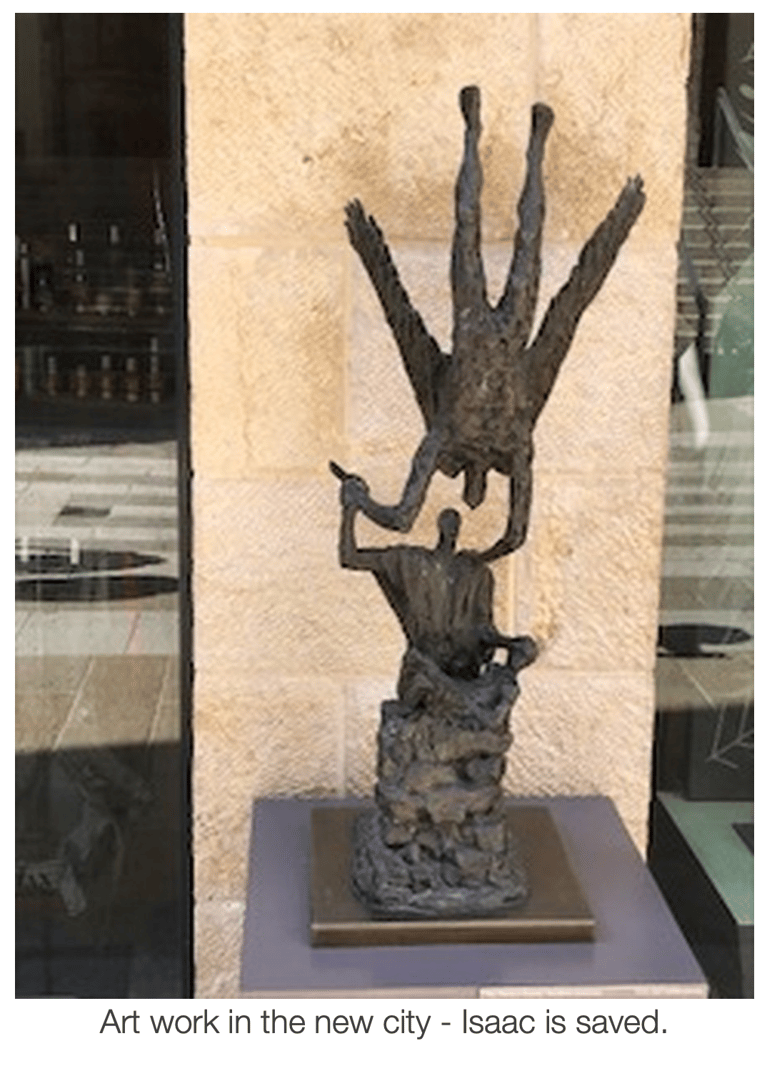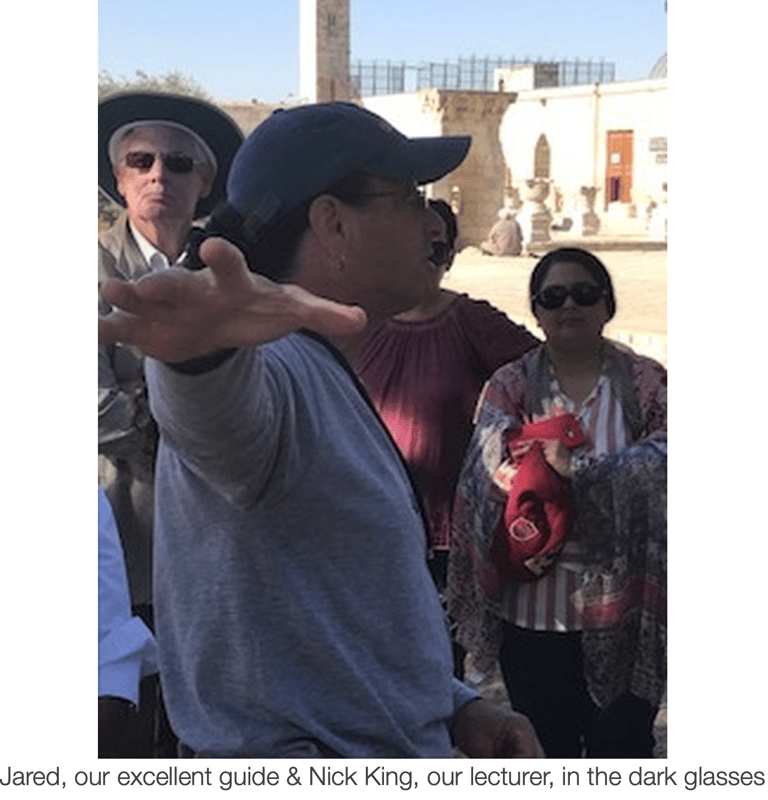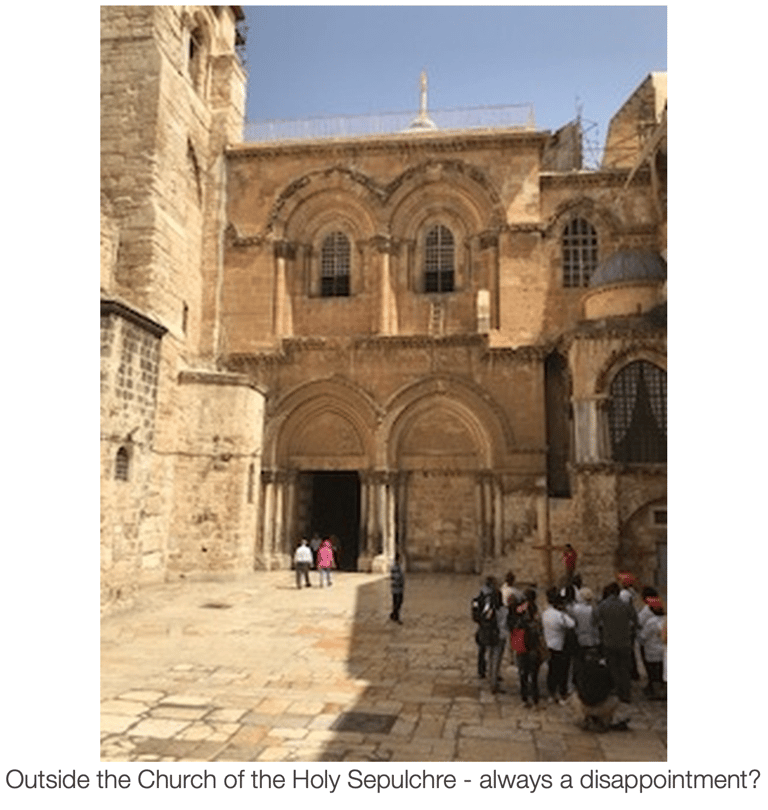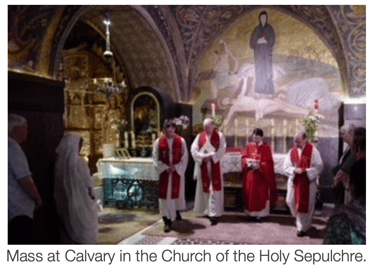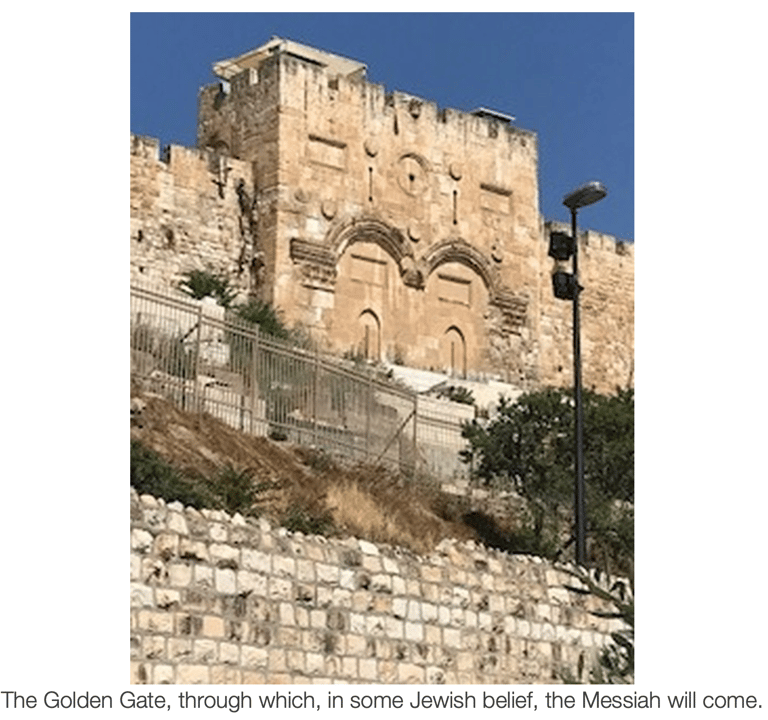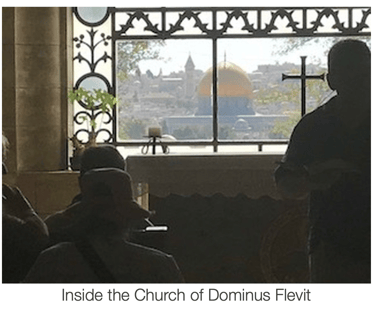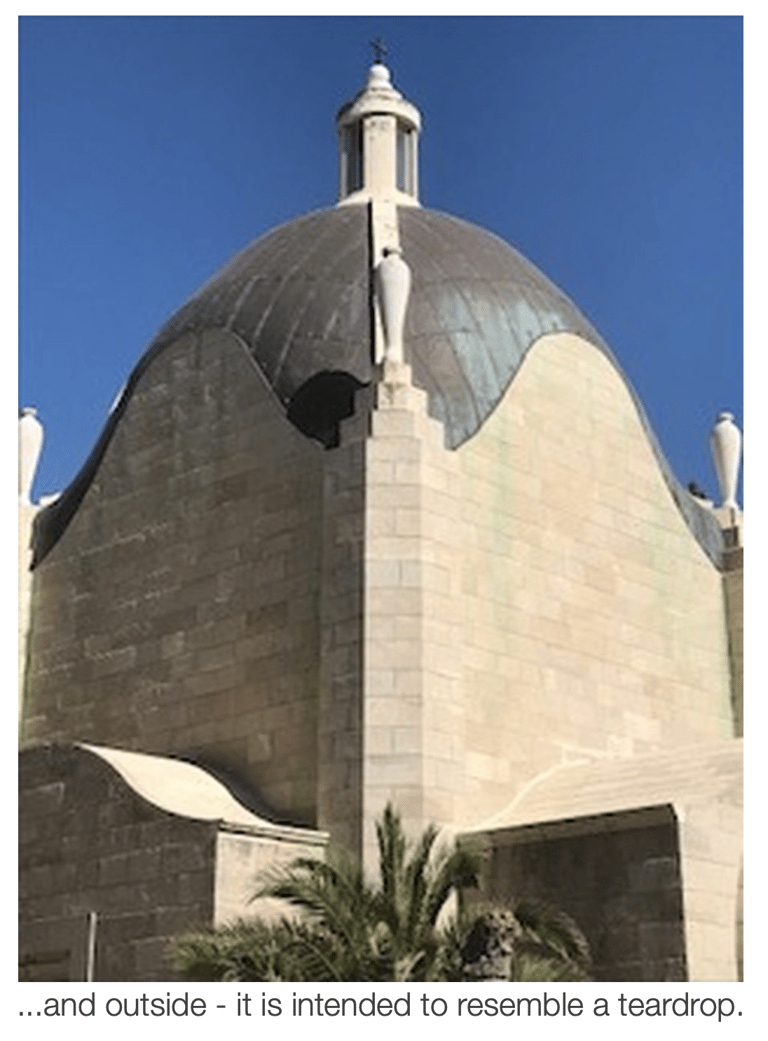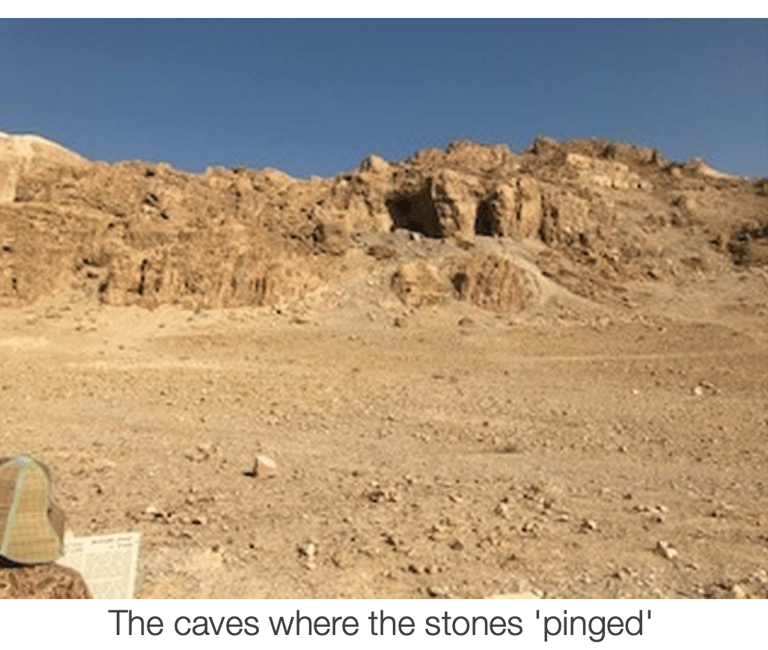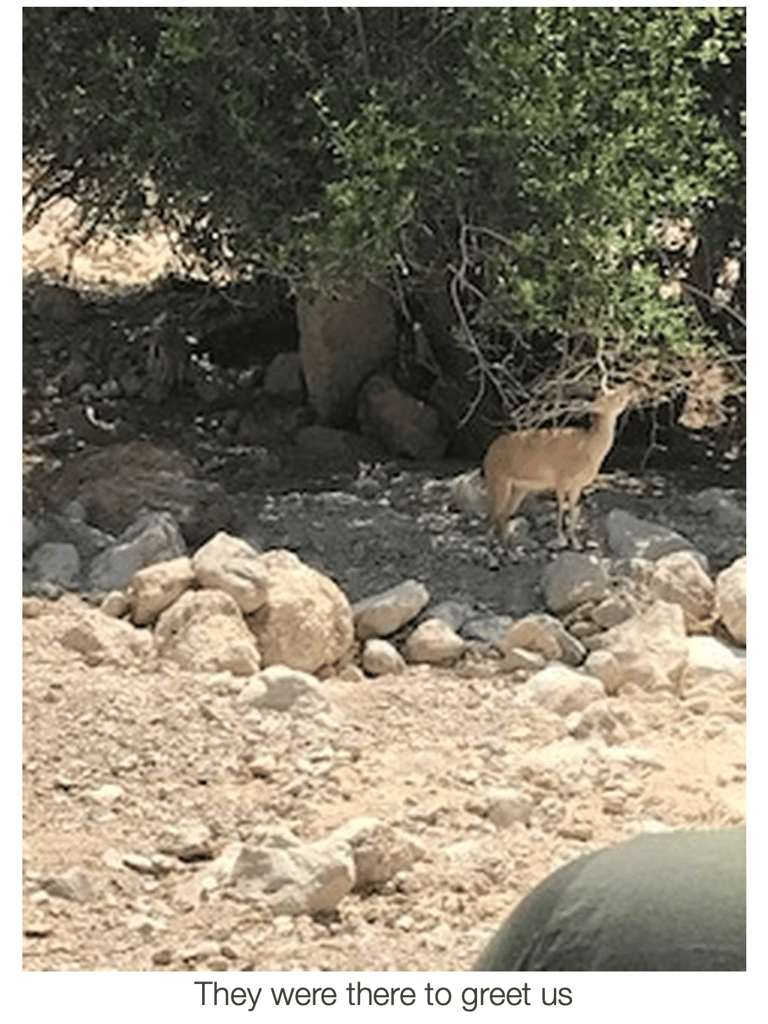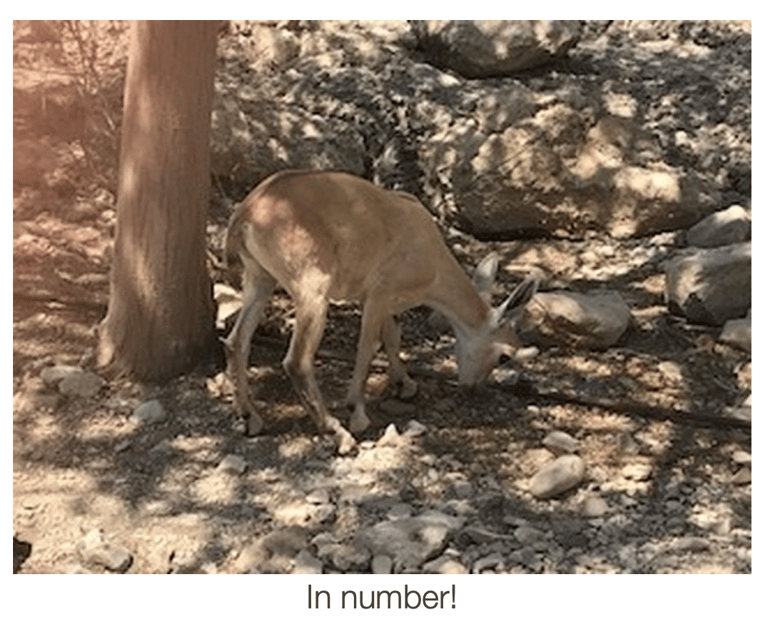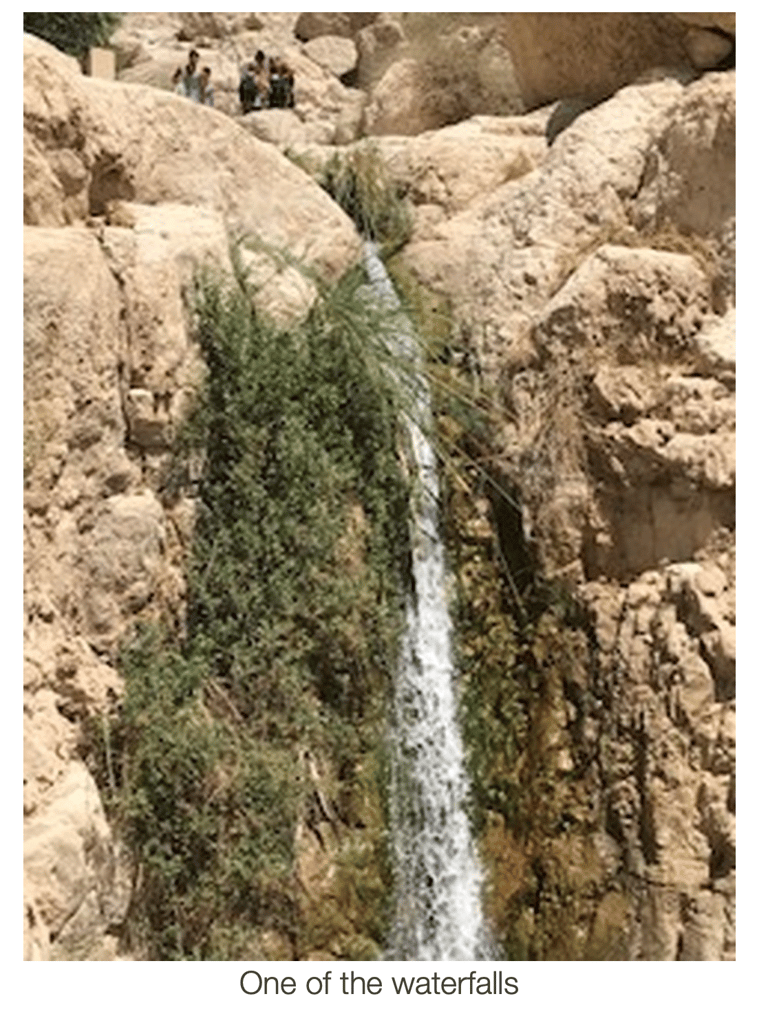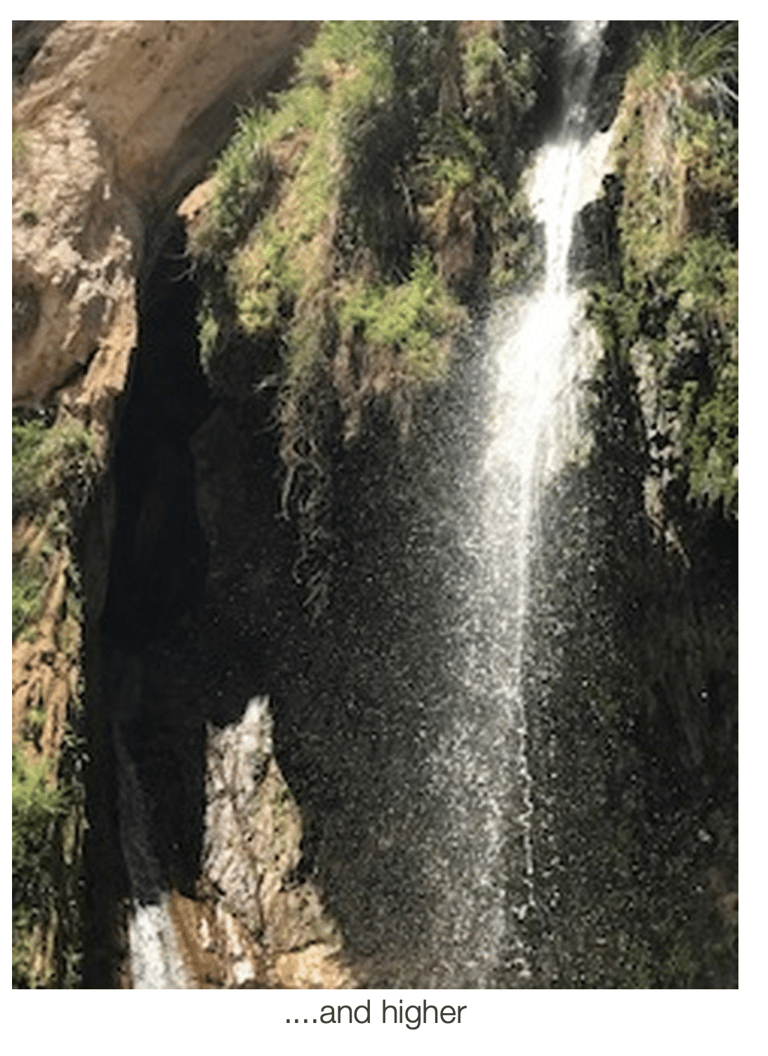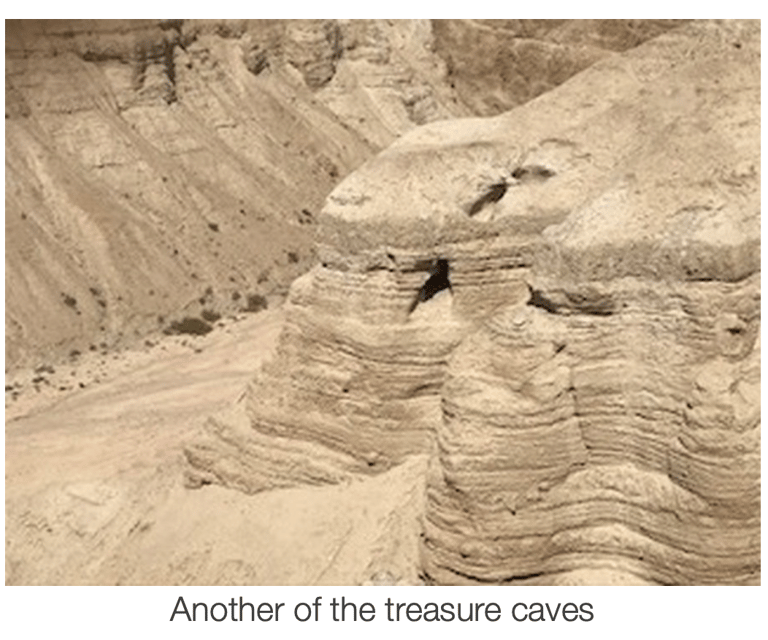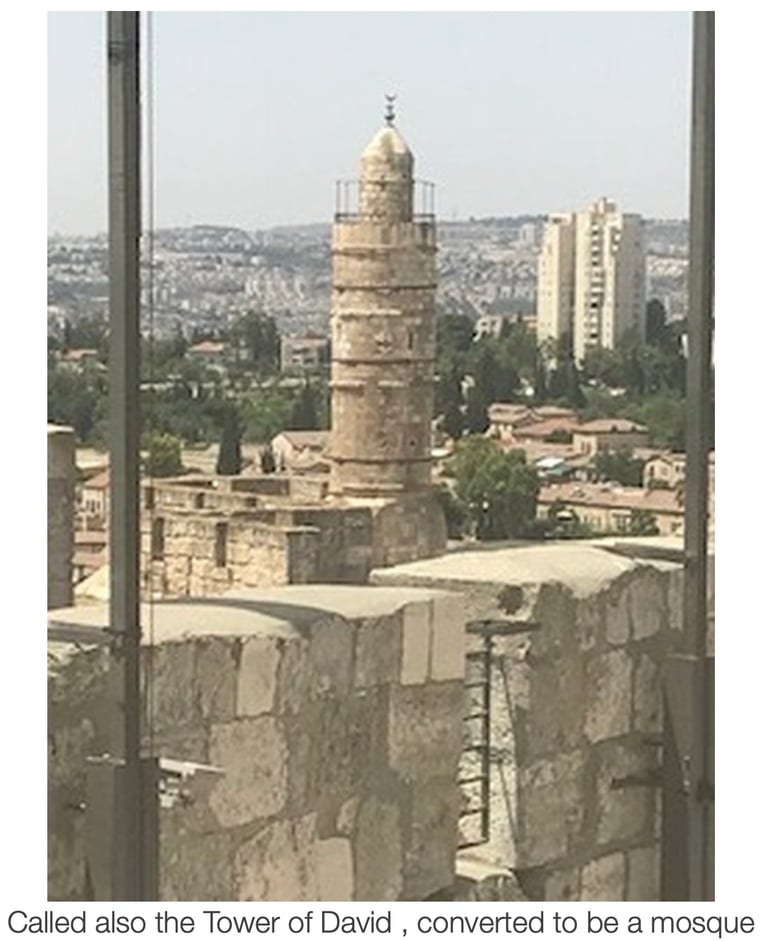Jerusalem 2018
Jerusalem Sabbatical - June 2018
Departure and arrival. It was not the most auspicious start to my month long sojourn in Israel. I was booked to fly El Al on the Thursday morning and to ensure an early arrival at the airport - their security can be thorough, especially for those travelling alone, and I was - I had arranged a B&B in Luton. I arrived to be told that the recent floods had taken three or four rooms out of service and so, "I'm terribly sorry my lovely there is nothing I can do"."But I have a flight tomorrow morning.""Sorry.""Why was I not told yesterday so I could make other arrangements?""Sorry."Have you ever stayed in one of those soul-less, window-less, chair-less bed-rentals that seem to be put together in the way Lego pieces are combined but without the variety?The next day the taxi driver helpfully dropped me off half a mile from the airport as it was quicker to walk.A five hour flight is a mere hop to we seasoned long-haul travellers, though it came with the usual inconveniences - no leg-room, a large man in the seat in front who put his seat back to its fullest extent as soon as he was able; a child behind who found kicking the seat in front, or dropping her tray, were sources of endless fun.I arrived at Ben Gurion Airport and my taxi driver was waiting. He pointed out that we are in the middle of Ramadan, and in the evenings the old city is heaving as thousands flock to pray at the Haram ash-Sherif, known also as the Temple Mount, the sight of the Golden Dome Shrine and the Al Aqsa mosque. So the old city is often shut down to traffic. He was preparing me for a walk. As it happened we were allowed in when a member of the IDF (Israeli Defence Force) accepted the taxi had a permit and we were into the narrow streets, thronged with people and stalls preparing food for the end of the day's fast.


The Sisters of Notre Dame de Sion seek to give witness to God's love for the Jewish people and one of the ways it promotes this is by the study of God's Word. Hence the course I will be following from Monday and hence the venue, which is now both Convent and guest house.In the basement there is a paved area which is thought to be 'The Pavement' also known as 'Gabbatha’ in Hebrew where Pilate condemned Jesus. The Arch in the street outside which runs into the Basilica is known as "Ecce Homo" (Behold the Man), Pilate's words as he had the scourged Jesus brought out before the crowds. Consequently this is the area of the start of the Via Dolorosa, the Road of Sorrow, walked by pilgrims for many centuries who believe they are following in the steps of the Lord.The belief is not fanciful, but it is not true.The Convent is built partly on the site of the Fortress Antonia, which Herod the Great erected to keep watch on the Temple area. He named it after his then patron Marc Antony. It was once thought that Pilate, fifth Prefect of Judea, would have stayed in the fortress, close to any possible riot, when he came up to Jerusalem for the major festivals when the place was heaving with pilgrims. Most of the time however he stayed in the more pleasant ambience of Caesarea on the coast and it is now established that when in Jerusalem he actually stayed in Herod's Palace, in the west of the city; more luxurious than soldiers' barracks.However, generations have blessed the Via Dolorosa with their prayers, genuflections and kisses as they still do today. The Church of the Holy Sepulchre's domes are clearly in view from the terrace, as is much of the old city.The Pavement below here dates to the time of the Emperor Hadrian, and it has the line scratching of a dice-game the Roman soldiers played. We even know it was called the King's Game and required the capture of 'the King'.
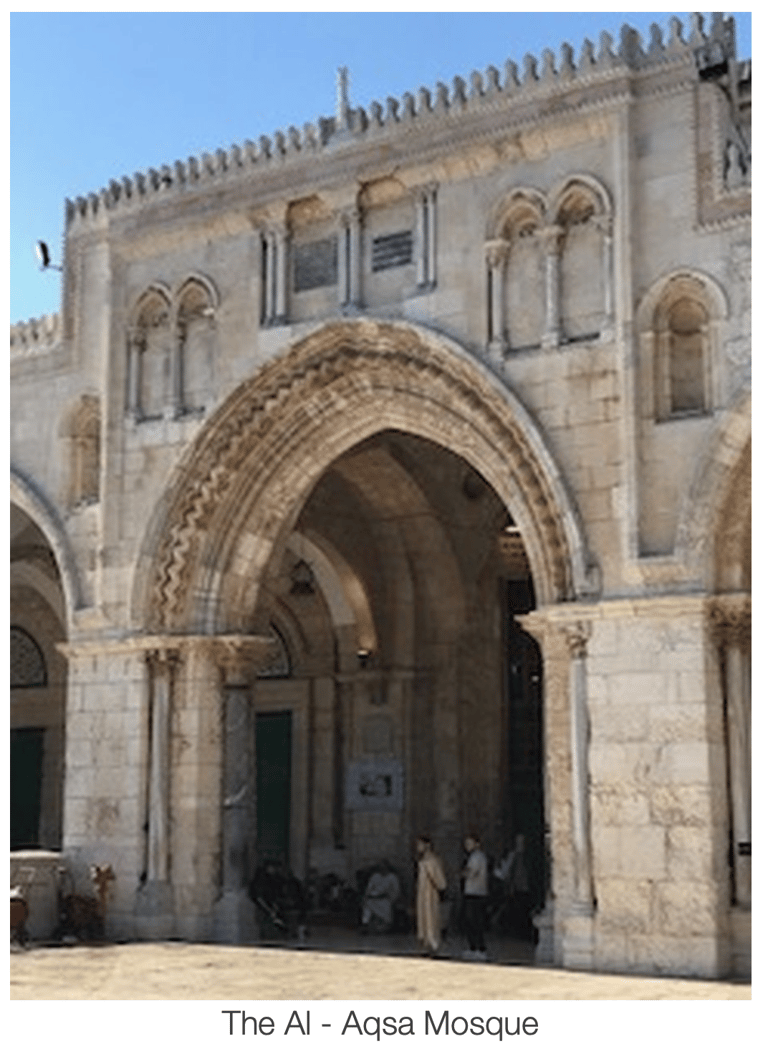

Friday June 1st.
It is being reported that between 200-300,000 pilgrims attended prayers at Haram al-Sharif today, almost without incident. (One man was stabbed but this was an accident). The IDF (explained earlier, please keep up) allowed people in without the usual fastidiousness and delays. Would that such cooperative good sense prevailed every day, and was reciprocated.At supper I met a charming young lady (13 years old) who was here on holiday with her father as a birthday present. She has the delightful name 'Aletheia' which in Greek means 'truth'. I asked her if she lived up to her name. "Most of the time", she replied. She and her dad both agreed she was a dreadful liar. So her name might have been Nathanaella, after the Israelite who was incapable of deceit (Jn,1).
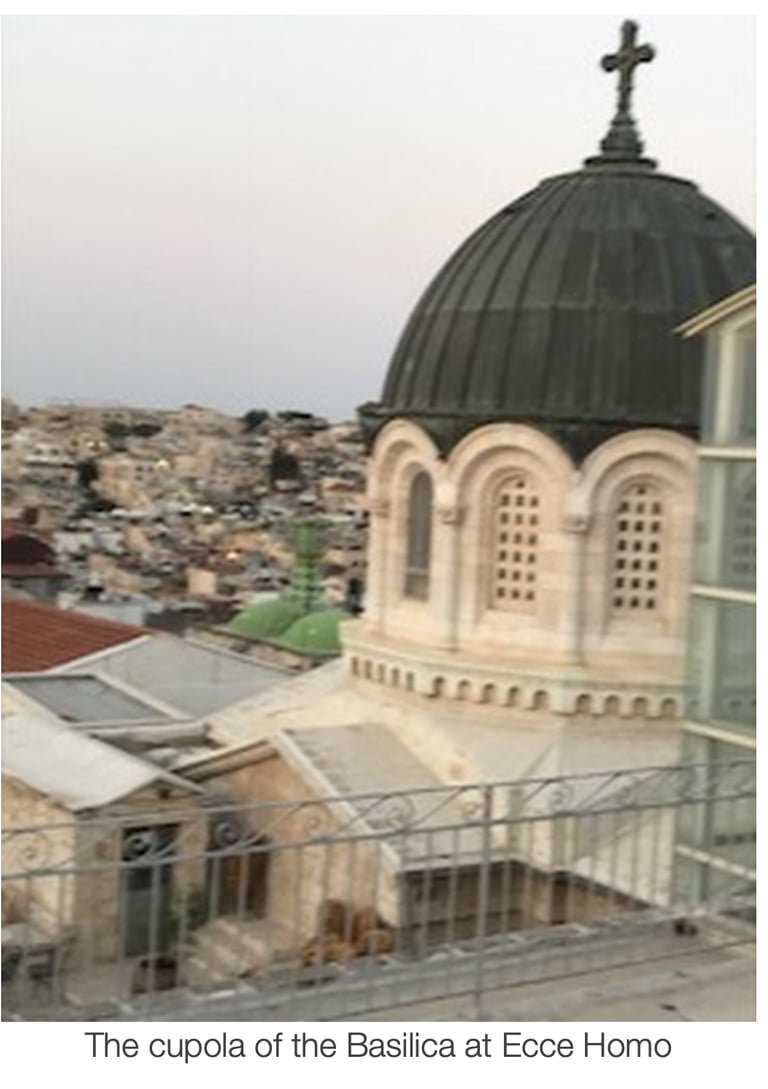



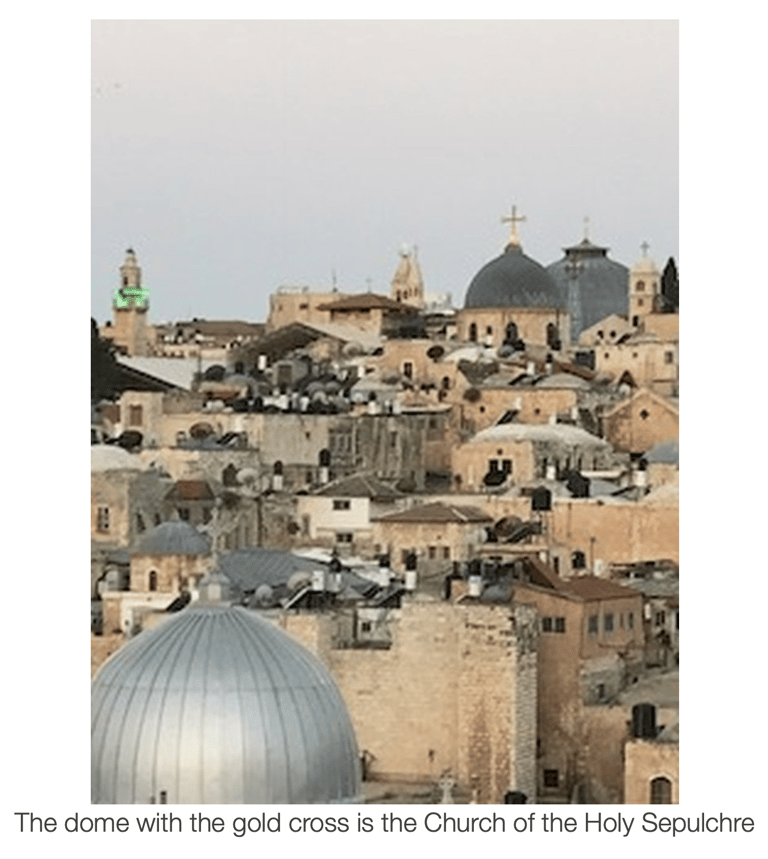


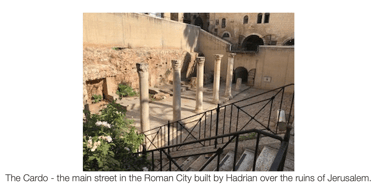
Saturday June 2nd.
I have found the washing machine. Essential as I am travelling light, a fact commented on by my interrogators at Luton, which probably added to their suspicions. I went for a walk to get supplies as I brought only mini toothpaste and deodorant. I went out of the old city through the Damascus Gate and after a little wander I passed the Albright Institute. He was an American scholar and preacher who established biblical archaeology. His desire was to prove the truth of the Bible by digging and famously came to Palestine with a trowel in one hand and the Bible in the other. This approach has been long discredited. Biblical Truth is much richer than an answer to the question 'what really happened?' As our guide would later say quoting someone, "The Bible is all true; and some of it took place". Then I found St George's Cathedral, an Anglican Church and modern foundation, cool and airy.Then back into the old city by the New Gate and a stroll towards he Jaffa Gate and a restaurant called Rossini's, recommended in the Rough Guide for the size of its appetisers and glasses of wine, neither of which proved correct, but the baked Denise fish, new to me, was delicious.The group of students has begun to assemble and our tutor, Nick King has arrived. It will soon be time for work although I did spend a lot of time today annotating Tom O'Loughlin's book on the Eucharist.
Sunday June 3rd.
Bitten by un-named beasties in the night, which will require a trip to a chemist. That task accomplished I had a quiet day preparing for the work to come.
Monday June 4th.
I strolled through the Jewish quarter looking for some art work. I have a couple of pictures which show an appropriate scene drawn by writing all the Hebrew words of that book. So Job is pictured on his dung heap, and the psalmist is at prayer with his shawl and teffilin. No one at the Institute had come across these, which I think are officially stamped by some authority. The place was only waking up and few shops were open. This quarter is clean and modern. It is a centre of study in which only about 3,000 people permanently live; as opposed to the 30,000 who habit the Muslim quarter.One person is yet to arrive and so we are not actually starting the study part of the adventure until tomorrow. We have a bit of orientation, and Nick asks me to preside at Mass. I have to prepare a homily quite quickly on a passage of 2 Peter and the parable of the tenants in the vineyard. As Jesus has arrived in Jerusalem at this point in Mark's narrative the task is not too difficult.
Tuesday June 5th.
A morning given over to introductions and administration gives way to the start of the lectures. Nick is excellent, as I expected, and we launch immediately into Luke and his artistry. Nick is convinced Luke was Jewish - most scholarship accepts him to be a Gentile, without looking closely enough, thinks our learned mentor.We have Mass with the community here, Sisters of Zion and Chemin Neuf, who actually run the guest house.
Wednesday June 6th.
An early start. We are queuing at the security gate at 7.30 to enter Haram El-Sharif, also known as the Temple Mount. It was here that, tradition says, Abraham bound his son Isaac, following the command of God, to offer his son as a burnt offering. This was the mountain where Solomon built the first Temple. David was not allowed to enter following his sins involving Bathsheba, mother of Solomon, and his murder of her husband Uriah. That Temple was destroyed by the Babylonian forces of Nebuchadrezzar and the elite of the people were taken into exile in Babylon. A generation later some returned with the blessing of Cyrus, King of Persia and the Temple was rebuilt. The work was ascribed to Zerubabel, a descendent of David, who then disappears from history. This was the second Temple. It was hugely enhanced by King Herod the Great to accommodate the huge numbers of pilgrims who ascended to Jerusalem on each of the three major feasts - Passover, Pentecost and Tabernacles. Herod's engineers built a huge retaining wall and then extended the mountain top with a huge platform supported by great arches. That platform, fifteen football pitches in size, is where we are standing. Its great buildings are now the shrine of the Dome of the Rock, and the Al - Aqsa mosque. Islam is an Abrahamic faith and has its origins in Judaism and Christianity whose prophets it also honours. Acknowledging that fact, the caliph Abd al-Malik, having built the shrine as a place sacred to all monotheistic faiths, built the mosque for the followers of Islam. So at least our guide, the excellent Jared, told us.
As we were listening, an aggressive chant came from within the mosque. Across the plaza a group of Israeli children were being escorted by soldiers. Others took positions in front of the mosque. Nothing developed but it shows how things could get nasty any time. "Don't worry," Jared assured us. "It happens all the time; and usually passes quickly."After a quick coffee and water break back at Ecce Home, and a change into more comfortable clothing we were out to the archaeological area in the City of David. Excavations have revealed a huge area of a substantial dwelling which is pre-Davidic and is likely the palace of the Jebusite King. We have a letter from such a person among the Armana letters (you'll have to look that up, I can't explain everything). It is likely that it was taken over by David after he had conquered Jerusalem and made it his city. Bullae, wax seals, were found in this locality, but they date from the 7th century, though one has a name which is the same as we find in a verse of Jeremiah. Jared made the fair point that we have no evidence, outside the bible, for David's existence. I asked about the Tel Dan inscription which refers to the house of David, but as he said, this is indirect - though I would still say conclusive.King Hezekiah extended the walls of the city to the west to take in refugees fleeing from the northern kingdom of Israel destroyed by the Assyrians, who followed the refugees and laid siege to the city. Jerusalem's water source, the one thing that made the city habitable in this inhospitable area was on the floor of the Kidron valley, outside the walls. It was protected but vulnerable. Hezekiah had the water diverted by building a tunnel into the city. This was discovered in the 19th century by an English officer and amateur archaeologist named Warren. He explored the watery passage way with a notebook, a pen and a candle, holding the candle in his teeth when the waters got high and the passage narrow and low. We walked Hezekiah’s tunnel, with more comfort than Warren. We emerged at the pool of Siloam - see John chapter 9.
In the afternoon we went to another archaeological park; this one is south and west of the Temple Mount. Pilgrims who washed to purify themselves at the Pool of Siloam will have walked up the hill, after Herod's improvements climbed steps, up to the Temple and entered through a three arched doorway, bricked up but still visible.Round the corner on the western side, a huge depth has been excavated to reveal huge building stones hurled down by the Roman soldiers in 70 BC with such force that the pavement is bowed. This is ground upon which Jesus stood. Here is the market where pilgrims bought animals for their sacrifices and provisions for their stay. Here and in the great Royal Portico above, teachers would have preached, seeking to capture the attention of the crowds.A terrific day.
Thursday June 7th.
We are not only covering the Gospel of Luke in significant depth, line by line, but also learning about Jewish ways of interpreting Scripture. This morning it was a talk from Marcie Lenk on Midrash, which involves a very close reading of the text. It is a method developed by the Rabbis as Judaism transformed from being a religion of sacrifice, impossible after the destruction of the Temple by the Roman forces of Titus in 70BCE, to a religion of the Word. Marcie had grown up believing that Christians wanted either to convert her or to kill her. A meeting at this house for joint bible study with Christians convinced her that neither was actually the case, and her friendships with Christians, and particularly the Sisters of Sion, have strengthened since.
Friday June 8th.
Debbie Weissman opened our day, following on from Marcie yesterday, on a similar theme of Jewish Scriptural interpretation. She has a long background working with the World Council of Churches, (at which the Catholics have only ever had observer status, at our request.) I have read quite a lot of the writings of Rabbi Jonathan Sacks, and so the area is familiar to me, but hearing in Jerusalem a Jew speak about her faith is wonderful.
Saturday June 9th.
Today is an early start to be at the Holy Sepulchre for Mass at 6.30. The streets are deserted and filthy after the partying the night before - it is still Ramadan, and the all-day fast (and a proper fast, with no food or drink, not even water in these blistering hot days) is broken at sunset with a feast- but the debris litters the Christian quarter too. The Church is one of the great disappointments. That can diminish with familiarity, but, tucked away - it is notoriously easy to miss for even the frequent visitor, and gives no sense of the enormity of what took place here. That is a consequence of its history, multiple destructions and rebuilding, and constant haggling over every aspect of its maintenance by those who share responsibility for its upkeep. Famously the key is held, very proudly, by a Muslim family, and has been for generations, as the Christians cannot agree over that!
The Franciscan overseeing the sacristy is not thrilled at our appearing and disturbing his reciting of the Divine Office. He asks for our voucher, and the instructions are clear: no singing and twenty five minutes only. Joe who is presiding takes the command seriously, perhaps helped by having prepared a homily for today's feast day, the Immaculate Heart of Mary, but the Mass books are prepared for a votive Mass of The Holy Cross and the stoles given to the concelebrate are red. We have been given the Calvary Altar. Brother Sacristan leads us up the steps where a crowd of pilgrims and St Mother Theresa's Sisters are waiting for us. It is impossible not to be moved by the belief, which has many supportive reasons for being accepted as truth, that the Lord died very close to this place.After another session on Luke one of the receptionists speaks to us. She is a Muslim who was born in this house where her father worked for the sisters. He stayed night and day through the wars to keep the place and the sisters safe. He worked from the age of fourteen to retirement in his 60's. She explained Ramadan, i's rationale and its practice. They really do put us to shame, not only by taking fasting very seriously, but by the links that are made with charitable giving to the poor, and hours of prayer and meditation. She also spoke, encouraged by the ladies of the group, about the treatment of women. She is a bit of a feminist herself. Much of the rest of the day outside the classroom was spent preparing a homily for Mass this evening in the Basilica here at Ecce Homo. I take the opportunity to give an overview of Mark's Gospel. I am delighted to report that it drew praise from Nick.The Internet allows me to know the half time score in the Rugby international at Ellis Park, and after supper I learn the full time score. What a match it must have been. I hope the recording machine was working back home.The copy I sent last Thursday has arrived. I send it to myself, so when it reappears in my in tray I know it can be accessed by Anne and put on the web-site. I think it must have been too large, and the carrier pigeon that flies in cyber-space had to make several journeys. I will keep things shorter in future.Evening mass means that for the first time in YEARS I have a Sunday which is completely free.
Sunday June 10th.
I went for a wander around the Jewish quarter continuing my quest for the biblical script-pictures. I entered the first art shop on the Cardo, the ancient thoroughfare from the time of Hadrian who destroyed Jerusalem after the second revolt and built over it a Roman city, Aelia Capitolina. Recently excavated it is now a fashionable shopping street. A man in a smock covered with paint greeted me. I asked about the pictures. He knew what I was talking about but did not deal in them personally. A shop close by used to have many but had stopped and got rid of all of them. He himself was not computer literate but if I should care to come in tomorrow, his secretary would be in and she could give me a list of the places that deal in them, and save me going from shop to shop. But now he must offer me a glass of water. It is a hot day, going to be very hot. He would have made the offer at once but he had to allow me to ask my question. Two glasses of water appeared, one for me. I asked about his work. His grandfather had lived in the old city and his father was the first to open a shop in the old city after the war. He had been blessed.I asked about his work. He showed me the piece he was working on. A view of the bricked up Golden Gate with a dove (the Holy Spirit?) in a blaze of light in front of the Gate. He told me his son had asked why the Gate was closed up and he had replied "You may close the gate physically but the spirit you cannot close up.” This is my son he said and indicated a small picture of a boy looking at a wall covered with images of hands. I said it reminded me of something my school had done as part of a venture with our linked school in South Africa. "You like it? I give it to you." I said I must pay for it. "I like, for the first person who comes into my shop each day, to give them a picture if they like it. It is my way of saying Thank You to God. I have been blessed. I have more than I need." What a lovely start to the day.I spent much of the morning going into art shops; a gentle, relaxing way so keep the Christian Sabbath.
Monday June 11th.
A morning in the classroom with both Luke and then learning about Jewish Shabbat. In the afternoon we have a coach take us to the tops of the Mount of Olives and the traditional site of the Ascension. An octagonal wall gives a sense of the first Byzantine Basilica, the bases of whose pillars are still visible. This was built over an octagonal shrine which had open arches and was open to the sky. Muslims converted it to a mosque and filled in the arches and gave it a roof which is what we see today. Within there is a rock with what has been interpreted to be a footprint! Around the corner is a Carmelite foundation which is the Church of the Pater Noster. Around the walls of the Church and its, sort of, cloister is written the Lord's Prayer in many languages, on ceramic tiles. A cave in front of the Church is said to be the place where Jesus taught the disciples this prayer. It comes in two versions, one in Matthew, when the teaching is part of the Sermon on the Mount, therefore Jesus is in Galilee, and a shorter version in Luke, when Jesus has just started his journey, setting his face for Jerusalem, and so seems again to be in Galilee; but he has just been in the home of Martha and Mary, which John places in Bethany, just over the hill from where we are. There is nothing simple in Bible studies. We walk down the steep hill to the Church of Dominus Flevit – where the Lord wept. In Luke's Gospel Jesus, arriving at the top of the Mount of Olives, sees Jerusalem below and weeps, foreseeing its forthcoming destruction. How he wished to gather her children around him like a mother hen - an image which NT Wright (I think) saw as referring to a farmyard where a fire is raging. The hen gathers her chicks under her wings. The fire sweeps through. The mother is a blackened carcass, but the chicks emerge unscathed.The church was one of many designed by the Franciscan architect, Antonio Barluzzi. It is in the shape of a tear drop, and within there is a picture window behind the altar giving a panoramic view over the city, and central to the scene is the Golden Dome, the site of the Temple of old. Further down the steep incline we enter the garden of the Church of All Nations, Gethsemane. It was the first of the Barluzzi's churches built in the 1920s. The purple dyed alabaster windows ensure the interior is always quite dark.
Onwards to our final destination of the afternoon, the Greek Orthodox Church of the Dormition of Our Lady. Catholic teaching is ambiguous as to whether Mary died and was assumed, body and soul into heaven, or was taken up before death. The Orthodox accept she died and three days later the Assumption happened. Dormition means falling asleep. There is a Catholic Church of the Dormition just outside the walls of the Old City to the South. This seems to be an older tradition of Mary being in the house at Ephesus, looked after by the Beloved Disciple. The Church is entered from a courtyard and immediately there is a long, wide flight of ancient stone steps down to the shrine, decorated with dozens of lamps hanging higgledy piggledy from the ceiling. Time is getting on and we have only five minutes to view the church, but the Lion Gate and home is a mere ten minutes away.
Tuesday June 12th.
A day in the classroom, with a morning and afternoon session on Luke, with some stimulating observations around the table; and a second hour with Debbie Weissman.After lunch I return to the Jewish quarter and the art shop I visited on Sunday to gain information about the calligraphic art work I am seeking. I am not entirely successful, as it seems the centre of this sort of work, micro calligraphy it is called, is centred on a village with an arty reputation called Safed up in the Galilee. I know I bought a picture there on my last trip, and it seems likely I got these other two there as well. Safed is not on our schedule, but I may get a taxi there if we are given enough free time.The shop was full of tourists when I arrived but I got a very warm greeting from Udi, the artist and his assistant did some research on the computer. If I am not successful Udi will do one for me!In another gallery I saw a beautiful piece that I really liked. I have to think where I would put it!
Wednesday June 13th.
Another day in the classroom, with Luke and the Jewish liturgical calendar; But tomorrow we go on our next excursion - Qumran and the Dead Sea.
Thursday June 14th.
An early start. Breakfast at 6.30 and ready to leave at 7.15. We are all there and ready to go and Jared, our excellent guide, is there too. Happily the coach is also where it should be. To get to the road we want, to go east, we have to drive round the old city and then we are on the new, modern Jericho Road, which tunnels under the Mount of Olives and when we come into daylight again we are passing through the suburbs and into the desert and descending from way above sea level to way below; in fact to the lowest point on land, the Great Rift Valley and the Dead Sea. Jared explains the geological background and the tectonic plate movements which formed the Rift Valley, which extends down to Kenya - yes I've been there too - and how the Dead Sea, being the lowest point, is where all the water which comes from the Herman Mountains, via the River Jordan and all the other mountains, settles. And, as water never flows upwards it ends in the Dead Sea which is journey's end. There is no outlet. Over thousands of years evaporation has removed some of the water but not the minerals present in the water, which have accumulated. These minerals include salt in a concentration of more than 34% , ten times more than that of the ocean. But also present are magnesium and sodium and these are being extracted to great commercial profit. In the past in-flow balanced evaporation. But since the birth and growth of the nations of Jordan and Israel water has been taken from the sources which used to feed the Dead Sea. Consequence: it is drying up. At present at a rate of one metre per year. It is four hundred metres deep, so it will take a while, but should we wait so long? For Jared it is a serious issue. But an up-side it that people are talking about it and working for solutions - and this includes Israelis, Palestinians, Jordanians, Saudis. Talk can bring trust, and with trust who knows what might happen.Our first stop is in the desert adjacent to a section of the range of mountains we have just driven through. A short walk takes us to a viewing area. What we are looking at are two caves side by side. It was here in 1947 that a young Bedouin herdsman seeking a lost goat (a dreadful thing to happen with dire consequences for him if he cannot find it) threw a stone into one of these two caves to frighten out the goat if it had strayed in. There was a sound which was not that of a stone hitting rock but a noise of a stone hitting pottery. These people of the desert know the difference. He scrambled up to investigate. He found anaphoras storage jars, usually used to store valuable goods such as wine or olive oil but what these contained were scrolls. Gradually fragments of parchment with Hebrew script began to enter the antiquities black market. The story is a curious, though at times squalid tale, but eventually over 900 fragments of scrolls of varying sizes were recovered. Most are in the Museum of Israel in Jerusalem, where research continues on the Dead Sea Scrolls.A swift ride takes us to the archaeological site, Kherbet Qumran. Jared rightly emphasised that there is no sure connection between the discovery of the Scrolls and whoever occupied this site. Many surmise that there is from archaeological discoveries such as long tables with long parallel grooves in them, such as a scribe might use to aid keeping his lines straight without drawing lines on the parchment, and little pots with ink residue in them. They further speculate that these scribes belonged to a monastic-type community, referred to by the historian Josephus, the elder Pliny and the philosopher Philo, (a contemporary of Jesus) called the Essenes. Having broken away from the Temple, where they felt the High Priesthood and authorities had left the proper path, they went into the wilderness and lived lives of strict ritual purity in common, sharing their goods. They were celibate (although in a cemetery close by female bones have been found - but was the graveyard exclusive to the community?) and, the theory goes, the Dead Sea Scrolls were written by them but at a time of danger were hidden and forgotten. The site was abandoned about 68CE, but not violently destroyed. Others speculate that, during the siege of Jerusalem by Titus, the scrolls were secreted out of the city and hidden and forgotten. Many questions, few answers. But it is a place of atmosphere among the ancient stones. Our next stop is En Gedi, the spring of the Buck (as in deer). Some of which we see as soon as we arrive. This is very kind of them as they usually hide away in day time.
This is a national park run by a kibbutz. At the top of the mountain is the spring of David, but we are not going that far. Those who feel up to it are going for a forty minute hike up and around the four water falls which flow from the rock and create little paddling pools, and fresh water for anyone who gets hold of it. That is how the kibbutz will bottle it and sell it, further limiting the water than runs is to the Dead Sea. It is good to get the legs working again, but then to lunch - Jared, a vegan, has chosen a vegetarian restaurant, an excellent guide as I said, and here the group, with two venerable reverend exceptions, float in the Dead Sea and some cover themselves with the black mud which is said to rejuvenate. It does not obviously work. Nick and I sit in the shade with an ice cream and a beer. Another excellent day.
Friday June 15th
Another day in the classroom. The excitement was kept for the evening. We were going to a Shabbat evening service in a synagogue in Jerusalem. An early, cold, but tasty supper - the meals are good, even though some days the kitchen is catering for three dining rooms full and they are learning that vegetarian me has no meat. At half past six we left for the 2.2 kilometre walk through the Damascus Gate and into the new city. We found the place, locked and bolted. We waited, and waited. No one had been to this synagogue before and so doubts began to creep in. Passing locals were friendly and as helpful as they possibly could be - which was not very. A man from Golders Green came from his house with his three children to talk to us and assure us that someone would be turning up in about ten minutes. He did not attend this synagogue as it was a long service, which he thought started at 7.45, not the 7.15 we have come for. There was a lot of singing he added. It was looking like a late night.After a little more than ten minutes the door opened and the women were allowed in. The men had to go round to the other side, to what was the main entrance and the men's door, where there was now much activity. We were welcomed by the Rabbi, from Sydney, and given our kippurs and told to sit where we liked. Later we were moved to the back as there announcements can be made to help us follow the books we were given, Hebrew on the right, English on the left , reading from the 'back', of course.Everyone was greeting everyone else with a warm hug, which continued throughout the service as new people arrived. Networking continued and stopped abruptly at the solemn bits. The atmosphere moved between fun and friendly and sacred and serious. After initial private but out loud prayers, with movements of hands and the whole body, the service got underway and we were quickly into a homily, delivered from the barrier separating men from women so that all were included. It was in Hebrew, with some Yiddish, and English for our sake. It was short and encouraged self reflection. Then the singing started with a psalm that opens our Divine Office each day, "Come ring out our joy to the Lord, Hail the God who made us". Once I had got a feel of the chant I could follow the Roman script of the Hebrew, helped by a very jolly man who told us the pages we were on. Then came 'the washing machine'. "You must go in. Come on, go in. You will regret it if you don't, I promise you", our jolly guide cajoled us. Some of us ventured in to join the conga line which circled round a central table as a lively song was chanted, and the men hugged those around them - it was a multi-tiered conga throng - and waved their arms and danced. Very Topol, en masse. It happened again later in the service, but I held back fearing for my glasses, which I'd had to put in my pocket.The whole event was a delightful mix of joy and prayer, with terrific singing , and we were all talking about it the next day. At the conclusion we were warmly thanked for joining them. How would we react to 30 foreigners of another faith coming to St Bede's one Sunday morning? They did seem happy to have us, and asked if we were joining them for a meal. As a group and individually we were pressed to join them for a Shabbat celebration. Nick and I left as two of the volunteers wanted to get home, they start very early, and so do we. The rest of the group were given a talk by our jolly friend, and the Rabbi, which they said was excellent. Should we introduce the washing machine into our liturgy?
Saturday June 16th
All the talk at breakfast was of the synagogue.And then back to the classroom. We are not let off on Saturday afternoons. Though Nick allowed Paul, an Aussie, married eighteen months ago to Jess, who is also on the course, to watch the end of the France vs Australia game in a competition that seems to be underway in Russia. (While delighting in the Cricket results against the Aussies, I am concerned about Rugby against the Boks. We get info on the Internet, but matches from Russia are being shown on a big screen at Notre Dame, a big religious complex - hotel, chapel, restaurant, big screen, just outside the New Gate of the Old City.)We had a Mass for Sunday in the lithostrotos, the pavement in the basement, which is the convent's claim to fame, along with the Ecce Homo arch. Very atmospheric. We have discovered that one of our group, John Abrahams, has a magnificent singing voice.
Sunday June 17th
Nick had suggested earlier in the week that we go to Morning Prayer and Mass at St Anne's Church, which is just down the way, is the home of the White Fathers, the Missionaries for Africa, and is the site of the Pool of Bethsasda, in Chapter 5 of John's Gospel. Until the archaeological discoveries it was thought that the evangelist did not know Jerusalem and had invented the location. Not so. Despite having celebrated with the group we stood to our plan. It was a delight. A beautiful church, with fine acoustics, which two religious sisters showed off magnificently. It was all in French, which was a bit of a challenge, but Nick was able to show off. Then we went for a walk on the walls. It is no longer possible to do a complete circumnavigation, and it is no longer free. So we set off from the Jaffa Gate to go round the north section and, rather foolishly, got off when we could go no further, and so had a walk through part of the Muslim quarter close to home and then had to return to the Jaffa Gate to do the southern section before doubling back to return to the Tower / Citadel of David for the English language tour at 11.00. Which was not great for two people who know their stuff. There were no genuine artefacts, all the interesting things are elsewhere, including in the British Museum, and the tour was through the history of Jerusalem which we are both familiar with. The highlights were: the view from the Tower and the model of the city submitted for the Great Exhibition in Vienna in the 1870's, I think the guide said. Nick thinks the other model of the ancient city is better, but I must find out where that is, as it has moved. Lunch followed and back in time for a quick clean up and out to learn about the Holy Sepulchre, which I have put on record already as a great disappointment.
"One expects the central shrine of Christendom to stand out in majestic isolation, but anonymous buildings cling to it like barnacles. One looks for numinous light, but it is dark and cramped. One hopes for peace, but the ear is assailed by a cacophony of warring chants. One desires holiness, only to encounter jealous possessiveness: the six groups of occupants - Latin Catholics, Greek Orthodox, Armenians, Syrians, Copts and Ethiopians - watch one suspiciously for any infringement of rights. The frailty of humanity is nowhere more apparent than here; it epitomises the human condition. The empty, who come to be filled, will leave desolate; those who permit the church to question them may begin to understand why hundreds of thousands thought it worthwhile to risk death or slavery in order to pray here." So wrote Fr Jerome Murphy-O'Connor, long-time resident at the Ecole Biblique et Archeologique here, in his magisterial "The Holy Land, an Archaeological Guide" ( Oxford, 1986[2nd ed] p.45).The Holy Sepulchre Church has a lot of history, much of which is visible in its stones if you can read them. Our guide, Dan Bahat, is an expert who has read the stones for decades and has a published book about his findings. We began in the square outside the entrance for an historical overview. A crucial question is the whereabouts of the wall of the ancient city. After the second Jewish revolt the Romans built a city of their own over the ruins and their wall enclosed this site. Previously this had been a quarry outside the city's walls. A cleft in the rock made a section impossible to quarry and it was left as an outcrop which the Romans utilised for crucifixions, which for them were always public displays to maximise its deterrent value and provide a cheap form of entertainment for the masses. John tells how Jesus was mocked by some from the walls of Jerusalem.
The quarry then also provided the opportunity for cave- tombs which abound in this area. Few doubt that this is the place, particularly as Constantine, as he did with St Peter's in Rome, had his engineers build on difficult terrain. It is on a slope which rises up to the Citadel of David, the likely place for Pilate's headquarters, and the incline had to be cut into to establish foundations for the new basilica. It also required buildings being demolished for the new building to arise. They also had a clue to indicate that this was the PLACE, as Hadrian had built a Temple to Jupiter Capitolina, and a flanking Temple to Aphrodite over the quarry, presumably to destroy a holy site for some group. Christians seem to have worshipped here regularly from an early date.
Constantine's building was in three parts: a rotunda, housing the tomb-cave, a forecourt / garden, where Golgotha was venerated, and a vast Church with atrium. When caliph Omar was in power, his mosque is adjacent, he refused to pray in the Holy Sepulchre, though invited by the Patriarch. As he said, if he prayed there it would be lost to you (Christians) by the very fact that he, Omar, had prayed there. However, this worked against the building when the Fatimid caliph, Hakim, came to power. He would not have touched a mosque but a Christian Church must be erased. This was in 1009. The destruction was systematic and rigorous.
It was Constantine Monomachus who is responsible for much of what we see today. His reconstruction (1042-8) was limited by funding. So the Church was lost, and many chapels were added, with the rotunda, housing the tomb now joined to a foreshortened nave which was where the forecourt had been. This gives us the present hotchpotch, but it all began to make sense to me and Dan's enthusiasm began to make me think this jumble had a sense, and indeed a mysticism to it, after all.
Monday June 18th
Today we visit the Holocaust Memorial Museum called Yad Veshem, two words which mean 'hand' giving a sense of memorial; and 'name'. There is a text from Ezekiel which is engraved on the gates of the Museum which I will have added to the second edition, as I am writing this late at night and cannot check the reference.We were told to be downstairs ready to go at 8.30. Suddenly a message was being passed through the group to go immediately to the classroom. Mrs Weissman was expecting to brief us before our visit, but our leaders had forgotten, or not communicated with each other, which has been a small but persistent irritant from the start. So we left slightly later than planned to catch a tram to our destination.Most people are familiar with such museums. Since I was last here the museum has developed and a new memorial has been added - to the millions of children who were killed. You walk through a dark space, guided by a handrail, illuminated by the flickering of thousands of candles as the children's names are endlessly recited. Then through the main museum, each going at their own pace, to take in the descriptions, and the testimonies, and the films, and the pictures, and the exhibits. It is both moving and disturbing, as the questions 'why?' and 'how could this happen?' recur. The exhibition opens and ends with children singing the National Anthem, and then you are into the light and looking across a well wooded valley in the land of Israel, a sight millions longed to see and yet never saw. A few minutes for reflection in the synagogue.It is a long walk back to the tree we were meeting under and time was short and so only a cursory glance in the book/gift shop, and out. A couple of the group got lost and delayed us slightly. Then off for a walk up the hill and a bus ride to Ein Karem, where the Sisters of Sion have a guest house and their novitiate and we have lunch. Ein Karem is the traditional home of Zechariah and Elizabeth, and so the place of the Visitation, the first church we visit in the afternoon; and across the way we next go to the church on the site of the birth of John the Baptist. You might think the two would be the same or very close but Elizabeth, as any woman giving birth, would be ritually impure for a time afterwards and thus be away from society, lest she ritually contaminate others. At least that was the explanation offered by the Franciscan Friar in the church.
Tuesday June 19th
To Bethlehem, and into Palestinian territory on the other side of the wall. We are first going to visit Bethlehem University. This Catholic foundation of the Christian Brothers, who remain a presence here, was inspired by the visit of Pope Paul VI in 1964 who requested a university be established here. Inevitably it began small, and by dint of hard work and generous donations it grew. There are now over 3,000 students, about a third are Christians, the rest Muslims; and two thirds are female. There are faculties for nursing, business studies, tourism... Though gaining employment after graduation is not easy. Unemployment stands at 20%. After a welcome in the chapel, and a tour of the campus, it has other centres across Bethlehem and beyond, which included showing us the hole in the library wall an Israeli shell made - the university has been under attack several times, and was closed for three years - we met two students who answered our questions.Life under occupation is hard for them. One lives in Jerusalem and faces hassle at the check point each day; the other was born in Bethlehem and will have difficulty when she wants to do a Masters Degree abroad, a visa being granted for only a couple of months. It is a way of encouraging people, especially young people to leave and not return. If Palestine becomes a state it will be a young one with a higher birth rate than Israel. One way to gain the territory is to buy it, as is happening in East Jerusalem; another is to settle upon it, a policy still continued though it breaks international law; and a third is to expel, or encourage all who are not Jews to leave. Christians now make up less than 1% of the population, and it is decreasing.Then lunch of fresh local produce in a local restaurant, just off Manger Square, and a visit to the Church of the Nativity, the Greek Orthodox version. Catholics own the few inches where a fourteen pointed star marks THE PLACE, but all that surrounds it belongs to the Greek Orthodox. We stoop to enter, not out of reverence or humility but because the doorway was made little to prevent the Marmaluks, slave-soldiers, from the Asian Steppes from riding their horses into the Church. In the cave below the church we pay our homage and sing a verse of 'Silent Night' to the appreciation of another group who have followed us.In the Church of St Catherine, next door and adjoining, we descend to adjoining caves where St Jerome is said to have translated the Bible, creating the edition called the Vulgate - for the ordinary person. To do this he had to learn Hebrew. The process took thirty two years. He was given a skull, often shown in icons of the Saint, as a not very subtle reminder to hurry up.On the way home we stop to shop. The owner gives us a warm welcome, we are the first visitors of the day and it is past three o'clock already, and explains the goods the shop offers in abundance. Later I am introduced to him and the warmth of his greeting is palpable, and his tears are visible as I offer sympathy for the wretched position he and his fellow Christians must endure. Hoping to travel back even more lightly than I came, I buy only some postcards and a camel, soft toy variety. Our final stop for the day before returning to base is at Shepherd's Fields. Another cave, everyone lived in caves at the time of Jesus' birth, clearly. Tomorrow the Galilee.
Wednesday June 20th
A very early start. We are making a packed lunch at 5am before breakfast and a walk to the coach. Today we go to the Galilee. Down we go from well above sea level towards the lowest point on earth and the Jordan Valley. With us is our guide for the trip, Gila, whose name means 'joy'. Our initial destination is Beit She'an, a National Park over the ruins of the 1st century Hellenistic city of Scythopolis. In the distance is a Tell, a mound made from the rebuilding of a city in the collapsed ruins of an earlier one; that process continuing through the centuries forming a large hill which is an archaeologists dream. By cutting into the hillside as one cuts a cake, the various strata of the different ages/ settlements can be revealed. The ruins, only recently discovered and excavated, are wonderful. Fr Pedro from Mexico sings in Spanish to show the excellent acoustics in the theatre. The bathroom intrigues the group as the ancient Roman /Hellenistic ways of toileting are explained.
The Greek city was built in the vicinity of an ancient biblical city associated with the death of Saul, first king of Israel. Saul, having forced David, his finest soldier, to flee from his court (and join the Philistines) and having failed in his pursuit of David, faced the Philistines at the nearby Mount Gilboa. Desperate to know the outcome he consults the Witch of Endor, who conjures up the ghost of Samuel. Samuel is in a customary bad mood, wrapped in his customary cloak, and he tells the King that he and his sons will die in battle the next day. Saul faints and the witch provides a meal for him. You need strength to face death in battle. Saul, wounded and weakened asked his armour bearer to finish him off least he be taken by the Philistines and abused. The servant refused. Saul fell on his sword and the armour bearer followed his Master. Saul's body was abused and hung on the walls of Beth Shan, this very place. Men of Jabesh-Gilead, a city Saul had earlier saved from destruction, came by night and recovered the body and gave it a respectful burial.On to Nazareth and the Church of the Annunciation, another of the works of the Franciscan, Bartolucci. Huge and impressive from the outside, it is calm and lovely within. The lower church is dark and solemn; the upper church bright and light.Lunch, the picnic prepared before dawn was eaten in the grounds of the house of the Little Brothers of Jesus, founded by Charles de Foucauld. Some of us were directed to a chapel which had a homely touch in the form of an ironing board at the back and a pile of clothes on top of it. This turned out not to be the chapel, which is a moving, atmospheric space, clearly signposted, where the holy man spent hours in prayer before the Blessed Sacrament. The next stop was Magdala. The name means tower and is mentioned by many ancient authorities but was unknown; a holy hypothesis. A priest of the legionaries of Christ had a dream of developing a retreat centre at this spot, on the Sea of Galilee. He obtained the funding and, as is necessary in this ancient land, an archaeologist came to do a survey, and a bit of a dig. They unearthed a synagogue dating to the time of Jesus, at the home town of his great supporter, and witness of the Resurrection, Mary of Magdala. An astonishing find. The synagogue contained a stone (there are copies only here as the real thing is still under scholarly wraps) which is an image of the Temple in Jerusalem, so its iconography suggests, and was perhaps the seat of the Torah scroll, read by the Rabbi on the appropriate days. A synagogue was a place for assembly and study more than liturgy until the fall of the Temple. The longed for retreat house is being built, but already complete is the Church on the site. What a wonder. Its use of its position on the shore of the Sea of Galilee is inspired. And the art work too is inspiring, especially the picture of the detail of the woman touching Jesus’ hem in her desire for healing. It is in a chapel below the main church, where the lectern, altar and tabernacle are part of a boat, the right dimensions for the 1st century, which sits atop a green marbled floor which is an image of the water outside the church and seems continuous with the lake. The lower chapel is a model of the synagogue with benches around the sides, and colouring from the ancient meeting house, and that stupendous picture. It is all brilliantly done. An inspiration.
Friday June 22nd
A more relaxed start to the day as we are not leaving until 8.30. I hear the alarm at 5.30 for only the second time on this trip. Normally I am awake long before it stirs into action. The time before the sun is visible is a delightful time of the day, as is the cool of the evening (the time God walked in the Garden looking for conversation with the creatures God had made in his own image). Once the sun is up it gets hot very quickly.We are having a day in the places we know Jesus visited. First stop: the Church of the Beatitudes. No one knows where Jesus taught his new Law, summarised in eight phrases, but it was on a mountain and we are not very high above the lake. But it is a pleasant spot and a fine Church, that Italian again, of eight sides.
Next, Capernaum - in the first century a thriving town. The Franciscans bought the site as building stones were found. They excavated and struck archaeological gold. A fourth century synagogue on top of a second century synagogue, above a first century building which is very likely a synagogue, and the very one where Jesus taught on a Sabbath and expelled a demon from a man.
A short distance away is a house whose use changes in time. One room, now directly below the centre of a modern church, that is meant to look like a boat but resembles a Martian space craft, was fully plastered, the only room so treated, and the pottery found, also changes from domestic vessels, common to all dwellings, to oil lamps. And there are other suggestions that this room had a sacred use, perhaps as a house church. It was attributed to be the house of Peter and Andrew, fishermen of Capernaum, and the place where Jesus healed Simon's mother-in-law of a fever.
Then next door to the grounds of the Greek Orthodox Church. They bought the neighbouring plot but no great finds yet. We have an early packed lunch and wait in hope that the priest will arrive and open the church. He does and we delight in some fine paintings which cover every wall space. Then we go to the traditional place of Jesus' baptism by John. Some opt for a renewal of baptism by full immersion and are rewarded with a dunking and a certificate. I, I surely do not have to say this, stay dry. Our final destination on this day of holy places is the Church of the loaves and fishes, not far from where we are staying. We have a Mass booked here. As Gila is reading from the letters of the fourth century pilgrim from Spain, Egeria, I am summoned by Sr Jocelyn, our leader. A religious sister is saying that, despite our clear booking for Mass between 4.30 and 5.30 we have to be finished and out by 5 when the place closes. It is now ten to four. Happily I have followed the principle of belt and braces, and despite assurances everything will be provided, I brought our Mass kit and we are ready to go. I am chief celebrant and an hour is plenty of time. The place where we are to celebrate is some walk away, and I set off to set up. By the time we are assembled it is ten past five and we have to finish by 5.45. Apart from time constraints, there is a wind blowing and we are not undercover but in the open. I fear hosts will fly away, chalices blow over, and I will not be heard. But the view for the congregation is wonderful. We are close to the waters edge and the water is the Sea of Galilee. Today is the Feast of Ss John Fisher and Thomas More, which is why I am celebrating though there are two other English priests on the trip, Nick and Frankie. I speak about the two great saints, and use a quotation from "A Man for All Seasons" - the conversation between Thomas and Richard Rich, beginning "Be a teacher" to move into a retelling of the story of the miraculous catch (Luke 5) which I have done in St Bede's School. Happily nothing blows away and we are away on time.
Pilgerhaus (pilgrim house) where we are staying is run by German Benedictines, tapping into the German, and American, market. It is high quality, but employs local people. The air conditioning is especially welcome at the end of another day's biblical toil.
Saturday June 23rd
A trip to a kibbutz called Ginosar because it houses the remains of a boat retrieved from the mud of the Lake, when the water level dropped after a drought. It was in very good shape for a boat that sailed these waters one thousand nine hundred years ago. It was swiftly and carefully preserved, wrapped in fibre glass and transported to the kibbutz. Whether it was Peter's boat, or a remnant of a battle fought on the lake with the Romans in which thousands were killed and the waters were red with blood.
Onwards to the traditional place where Jesus gave seven of his disciples a fish and bread breakfast, and by a charcoal fire asked Peter three times if he loved him. Peter's triple denial of the Lord was also by a charcoal fire. Then Peter is commissioned, "Feed my lambs, feed my sheep...Follow me." (see Jn 21). The Church is built around a rock, which echoes Jesus nickname of Peter given to him in Mt 18 at Caesarea Philippi.
Then we leave the Lake and head towards Nazareth but that is not our destination. We are going to Sepphoris, a Greek city, about an hour's walk from Nazareth. (A Greek city is one built in a Greek or Hellenistic style, with theatres, a hippodrome, gymnasia etc). This city was destroyed after it was part of a revolt at the time of the death of Herod the Great. Its inhabitants were sold into slavery. It was rebuilt by Herod's son, Antipas, ruler of Galilee, and he made it his capital, "The Jewel of Galilee". The building work would have required builders and wood workers. Hence the question - did Joseph and Jesus work here? Probably not as it was a Greek city and he seems to have avoided them, but there are many people who will argue he did. There is no evidence that he did. It is all speculation.The excavations are extensive. We first go to the theatre, whose marble has been plundered (or recycled) by the Crusaders for their fortress which stands atop the hill. Sepphoris means 'bird' and it sits on the brow of the hill as a bird sits in a high nest. (It comes from the same root as Zipporah, daughter of Ruel / Jethro and first wife of Moses, whose name means 'little bird'.) Adjacent to the fortress is a house of a rich man. He could afford to have his triclinium, his dining room, decorated in the high fashion of the day - Egyptian mosaics. The scene depicts a Dionysian feast, in little scenes.
In the administrative centre which might be governor's house there are marvellous mosaics on a theme of Egypt, when came the skilled craftsman, it is thought. The river Nile runs through the scene, the measure of the Nile's height is clearly seen. A high water mark meant an increase in taxes as there would be higher levels of production.Also visible is the lighthouse at Alexandria, one of the seven wonders of the ancient world. A fire was lighted on a tall tower and the flames were said to be visible thirty miles away. Back to the coach, and the few who made this excursion pick up the others and we take the road to Jerusalem. Farewell Galilee. It has been fun. On Monday we are back in the classroom.
Sunday June 24th
After the full and exhilarating days in Galilee Sunday is a free day and for most a gentle one. But not for all. Some hardy souls get up at four and take a taxi to Masada to climb the hill and see the sun rise, as well as doing the site. This was the place of Herod's summer palace and so, in Herod's style, was an impregnable fortress. After the second Jewish revolt the Romans were set on annihilating their enemy, some of whom took refuge here. They thought the Romans could not assail the mountain top. They were mistaken. The forces used forced labour to build a ramp up the side of the hill. Seeing that their end was inevitable the zealots killed each other in a mass suicide.I was not one of the hardy ones. I have been there before. Nick has arranged Mass in the Church, Dominus Flevit, Jesus wept, which we had visited on our tour of the Mount of Olives. It is a splendid place to celebrate Mass. The congregation see the Golden Dome and the walls of Jerusalem across the altar through a splendid picture window.
From there we went to lunch with the White Fathers (the Missionaries to Africa to give them their proper title) and enjoy their company and their hospitality (although they had not been told that I don't eat meat, but there was an abundance of salad and therefore it didn't matter). None of us are starving on this trip.In the afternoon I explored some of the new city, searching for the artists' colony, and after a wander around which took me past the King David Hotel, the HQ of the British Authorities at the time of the mandate and the target for an Irgun bomb attack which killed 92 people, if I correctly remember the plaque outside the building. Warnings were given and ignored, it said, hence the casualties, much regretted by the Irgun, who soon became the government. After a walk through the National Park of the Walls, I found the artists' area…but not what I was really looking for. The search for the micro-calligraphy continues.(I had hoped to get to Safed when we were in Galilee, and now I realise we were very close in Pilgehaus, an easy taxi ride away. But I would have had to miss things which I did not want to miss, even though there was quite a lot I would cheerfully have passed up.)Some of the Aussies had gone mad in the market and bought some lovely local cheeses and bread and dips, in abundance. They kindly invited me to join them; a very pleasant social evening.This is a diverse yet harmonious group. I have fallen on my feet in spending a month with them.
Monday June 25th
And so back to the classroom. It is Luke with Nick all morning, as a lecturer cannot make it, but will be with us tomorrow and the next day to give us a Jewish view on the Acts of the Apostles. This will work well as we finish Luke today, and begin Acts with Nick with some general thoughts.Three of the group are going to spend tonight in the Holy Sepulchre. Fifteen (max) are allowed this privilege. They leave at half eight and will not be back till after five.
Tuesday June 26th
The threesome return exultant; a fabulous experience. Quiet till half twelve and then Piccadilly Circus arrives as each holy group of residents does its own thing in sequence. Even the closing and locking of the doors is an event. A ladder has to be taken out for a Muslim, the family who have held the key for generations, lock the doors from the outside, including a high up one, then the ladder is passed through a window in the door which is also locked from within. In the morning the same in reverse. Only one, Fr Pedro who is up for anything fails to make it to class!More time in the classroom. Marcie joins us and her Jewish take on Luke / Acts is stimulating. We are expecting in the afternoon to go walkies around the Old City with our excellent guide, Jared. Then we hear he has been knocked down by a car and is in hospital. Israel is a dangerous place for pedestrians, one of the worst in the world. A few of us have had narrow escapes. Even in built up areas there does not appear to be a speed limit and the use of the horn would make any Italian proud.
While the rest of the group examine the lithastrotos (the pavement) below this building [see earlier] I escape and explore the new city, including the much praised, by our group, market. I am still on my search for micro-calligraphy and want to see what possibilities there are for revisiting the Galilee to go to Safed where this is a specialisation. It proves to be a distinct goer. Buses go direct from 9 o'clock and each two hours following and return on the even hour. The trip is over three hours. Do I want to spend six to seven hours on a bus in pursuit of a dream that could prove illusive, or too expensive? But it is a very pretty place, and there will be a pleasant lunch on offer somewhere. The answer is a definite maybe.
Wednesday June 27th
Prince William is in town. Several people spoke to me of the visit in my travels yesterday. We are classroom bound again. Marcie and Nick do a double header on The Acts and again Marcie as a practising, liberal Jew and a New Testament scholar is fascinating. Nick cannot disagree with anything she says, and nor can I. Oh for such respectful dialogue to be the norm. Jerusalem might yet find peace.Someone has asked for some entertainment on Saturday night to mark the closure of the course. Fr Frankie, a Salford priest, was a professional entertainer, specialisation panto (Frankie Doodle, any recollections?) so he is rehearsing four of us in a sketch. Oh dear.
Thursday June 28th
We complete the Acts of the Apostles, which is a bonus, and we begin a short series of lectures from two White Fathers (Missionaries to Africa is their proper title) on Islam and the other Christian churches in Jerusalem. Both are experts in their field, and we, all knowing we, are sitting at the feet of learned and holy men.One of them, Archbishop Michael Fitzgerald, presides at Mass in the Basilica this evening which is the Final Profession of one of the Sisters of Zion, Wafaa, who has been looking after us through our stay.
Friday June 29th
Nick presides informally at our Mass for the Feast Day. This is his final event with us as he departs today to be present at a double ordination of Jesuits in London tomorrow. As he is responsible for formation in the Order his presence is required. After the Mass Frankie reappears as St Luke and, reverting to his previous career, does an hilarious skit bringing in many of the phrases Nick has used to describe the learned ‘doctor’. Finally he presents Nick with an icon of the Lord from us all. A group picture ends the first part of the morning.
Saturday June 30th
The final day of the course. The morning is given over to reflection and evaluation. It seems clear that most of us are really happy with the lecturers and guides, and have a few concerns about the administration. Information sharing, between the leaders and then with us has been problematic. Overall it has been great. In Nick’s absence I get to preside at the final Mass in the Basilica. I try and bring themes of the month together in the choice of readings and the homily, which concludes with me reciting from memory, Gill Murphy’s wonderful “Peace at Last”, a story of three tired bears. It brings together themes of journey, peace, and night time disturbances, all issues for us in the blessed month now nearly over. My other words will not be recalled but the story might be.
Sunday July 1st
People start to depart. I however have a few days grace. I begin by walking to the Museum of Israel. I follow Bill Bryson’s principle that you best get to know a place by walking through it and round it. I knew my destination was west with a bit of south. So I set off. It was a delightful walk which I could never re-trace, and includes wandering through leafy suburbs and along a former railway line now planked over. After a while I decided I had veered too far south and turned. It was close to ten o’clock when the museum would open and I was somewhere else. Then I came to the Hebrew University and I knew I was close. Floodlights, the Knesset, the Museum. Four and a half hours later I was on my way home by a more direct route (half an hour’s walk to the city centre). I was feeling well content. The archaeological exhibition is wonderful, including such treasures as the Tel Dan discovery that gives the first non-biblical reference to the house of David, and the engraved monument that tells us Pontius Pilate was a Prefect. There is also the Shrine of the Book, the Model of the 1st century city, and Art Galleries. A special exhibition is devoted to Zuberan’s paintings of Jacob and his Twelve Sons, on loan from Auckland Castle, County Durham, UK!
Monday July 2nd
I have not given up my attempt to get some micro-calligraphy, the specialization of artists in Zafad (Safed) Galilee. I have researched bus times on the internet and a bus leaves at 9.00 (or 9.15) and returns at 4.00pm. It takes a little over three hours but is direct and I should have three hours in the town for a gallery fest and lunch. All buses leave from the Central Bus Station, don’t they? No they do not. Not a bus to Zafad in sight. I ask at ‘Enquiries’. “Not our company” is all I am told. A passer-by assists. The bus goes from across the road and to the left. I follow the instructions, but realise I have no ticket. Can I buy one on the bus. This is NOT the way on local buses. I ask around. People think it will be ok, but no one is that sure. Nine o’clock passes; so does nine fifteen. I have no idea where the bus starts its journey and so no idea when it might get here, but the longer I am waiting the shorter the time in Zafad. I decide, when half past is a distant memory, that I am not getting to Zafad this time. I will just have to come back.I go to the Rockefeller Museum. It is a disappointment. In the afternoon I drop into the Holy Sepulchre. The early morning is the only time to get a sense of prayer and peace here.
Tuesday July 3rd
I visit the Bible Lands Museum, next door to the Museum of Israel, and am there far too early as now I know where I am going. It is beautifully laid out and very informative, but there are only so many pottery artefacts, however fine, that you can look at in a short period of time. I return and do some shopping before meeting the remnant of our group for lunch.Time to pack. We leave, three of us sharing a taxi, at 2.30am. England are playing in the last 16 of the world cup. I got to bed at 9.00pm and am up at 1.30. we leave on time and say farewell to Jerusalem. Or ‘Adieu’, Zafad calls, as does the whole land:
“Next year in Jerusalem”.


